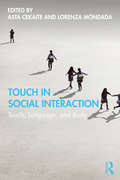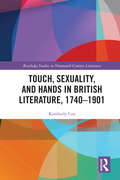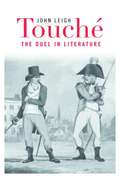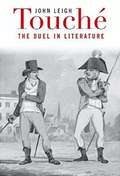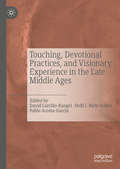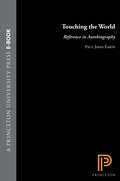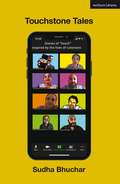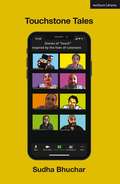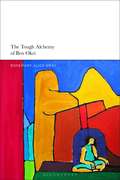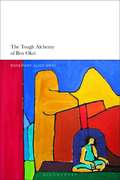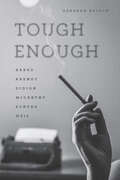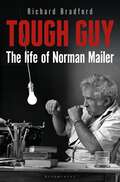- Table View
- List View
Tottel's Songes and Sonettes in Context (Material Readings in Early Modern Culture)
by Stephen HamrickThough printer Richard Tottel’s Songes and Sonettes (1557) remains the most influential poetic collection printed in the sixteenth century, the compiliation has long been ignored or misundertood by scholars of early modern English culture. Embracing a broad range of critical and historical perspectives, the eight essays within this volume offer the first sustained analysis of the many ways that consumers read and understood Songes and Sonettes as an anthology over the course of the early modern period. Copied by a monarch, set to music, sung, carried overseas, studied, appropriated, rejected, edited by consumers, transferred to manuscript, and gifted by Shakespeare, this muti-author verse anthology of 280 poems transformed sixteenth-century English language and culture. With at least eleven printings before the end of Elizabeth I’s reign, Tottel’s ground-breaking text greatly influenced the poetic publications that followed, including individual and multi-author miscellanies. Contributors to this essay collection explore how, in addition to offering a radically new kind of English verse, ’Tottel’s Miscellany’ engaged politics, friendship, religion, sexuality, gender, morality and commerce in complex-and at times, contradictory-ways.
Touch in Social Interaction: Touch, Language, and Body
by Asta Cekaite Lorenza MondadaRooted in multimodal conversation analysis and based on video recordings of naturally occurring social interactions, this book presents a novel analytical perspective for the study of touch. The authors focus on how different forms of touch are interactionally organized in everyday, institutional, and professional practices, showing how touch is multimodally achieved in social interaction, how it acquires its significance, how it is embedded in the current activity and in its social context, and how it is systematically intertwined with talk, facial expressions, and body posture. Including work by a wide range of renowned researchers, this volume provides rich visual illustrations of situations featuring touch as a social and intersubjective practice. The studies make a compelling contribution to the field by clearly examining and demonstrating the social meaning of touch for the participants in social interaction in a broad range of contexts. Presenting a new methodology for the study of touch, this is key reading for all researchers and scholars working in conversation analysis, multimodality, and related areas.
Touch in Social Interaction: Touch, Language, and Body
by Asta Cekaite Lorenza MondadaRooted in multimodal conversation analysis and based on video recordings of naturally occurring social interactions, this book presents a novel analytical perspective for the study of touch. The authors focus on how different forms of touch are interactionally organized in everyday, institutional, and professional practices, showing how touch is multimodally achieved in social interaction, how it acquires its significance, how it is embedded in the current activity and in its social context, and how it is systematically intertwined with talk, facial expressions, and body posture. Including work by a wide range of renowned researchers, this volume provides rich visual illustrations of situations featuring touch as a social and intersubjective practice. The studies make a compelling contribution to the field by clearly examining and demonstrating the social meaning of touch for the participants in social interaction in a broad range of contexts. Presenting a new methodology for the study of touch, this is key reading for all researchers and scholars working in conversation analysis, multimodality, and related areas.
Touch, Sexuality, and Hands in British Literature, 1740–1901 (Routledge Studies in Nineteenth Century Literature)
by Kimberly CoxFrom Robert Lovelace’s uninvited hand grasps in Samuel Richardson’s Clarissa to Jane Eyre’s sexual awakening at Edward Rochester’s embrace to Basil Hallward’s first encounter with Dorian Gray, literary depictions of touching hands in British literature from the 1740s to the 1890s communicate emotional dimensions of sexual experience that reflect shifting cultural norms associated with gender roles, sexuality, and sexual expression. But what is the relationship between hands, tactility, and sexuality in Victorian literature? And how do we interpret what those touches communicate between characters? This volume addresses these questions by asserting a connection between the prevalence of violent, sexually charged touches in eighteenth-century novels such as those by Eliza Haywood, Samuel Richardson, and Frances Burney and growing public concern over handshake etiquette in the nineteenth century evident in works by Jane Austen, the Brontës, George Eliot, Elizabeth Gaskell, Thomas Hardy, Oscar Wilde, and Flora Annie Steel. This book takes an interdisciplinary approach that combines literary analysis with close analysis of paintings, musical compositions, and nonfictional texts, such as etiquette books and scientific treatises, to make a case for the significance of tactility to eighteenth- and nineteenth-century perceptions of selfhood and sexuality. In doing so, it draws attention to the communicative nature of skin-to-skin contact as represented in literature and traces a trajectory of meaning from the forceful grips that violate female characters in eighteenth-century novels to the consensual embraces common in Victorian and neo-Victorian literature.
Touch, Sexuality, and Hands in British Literature, 1740–1901 (Routledge Studies in Nineteenth Century Literature)
by Kimberly CoxFrom Robert Lovelace’s uninvited hand grasps in Samuel Richardson’s Clarissa to Jane Eyre’s sexual awakening at Edward Rochester’s embrace to Basil Hallward’s first encounter with Dorian Gray, literary depictions of touching hands in British literature from the 1740s to the 1890s communicate emotional dimensions of sexual experience that reflect shifting cultural norms associated with gender roles, sexuality, and sexual expression. But what is the relationship between hands, tactility, and sexuality in Victorian literature? And how do we interpret what those touches communicate between characters? This volume addresses these questions by asserting a connection between the prevalence of violent, sexually charged touches in eighteenth-century novels such as those by Eliza Haywood, Samuel Richardson, and Frances Burney and growing public concern over handshake etiquette in the nineteenth century evident in works by Jane Austen, the Brontës, George Eliot, Elizabeth Gaskell, Thomas Hardy, Oscar Wilde, and Flora Annie Steel. This book takes an interdisciplinary approach that combines literary analysis with close analysis of paintings, musical compositions, and nonfictional texts, such as etiquette books and scientific treatises, to make a case for the significance of tactility to eighteenth- and nineteenth-century perceptions of selfhood and sexuality. In doing so, it draws attention to the communicative nature of skin-to-skin contact as represented in literature and traces a trajectory of meaning from the forceful grips that violate female characters in eighteenth-century novels to the consensual embraces common in Victorian and neo-Victorian literature.
Touché: The Duel In Literature
by John LeighMany of the West’s best writers fought in duels or wrote about them, seduced by glamour or risk or recklessness. A gift as a plot device, the duel also offered a way to discover how we face fears of humiliation, pain, and death. John Leigh’s literary history of the duel illuminates these and other tensions attending the birth of the modern world.
Touché: The Duel In Literature
by John LeighMany of the West’s best writers fought in duels or wrote about them, seduced by glamour or risk or recklessness. A gift as a plot device, the duel also offered a way to discover how we face fears of humiliation, pain, and death. John Leigh’s literary history of the duel illuminates these and other tensions attending the birth of the modern world.
Touching, Devotional Practices, and Visionary Experience in the Late Middle Ages
by David Carrillo-Rangel Delfi I. Nieto-Isabel Pablo Acosta-GarcíaThis book addresses the history of the senses in relation to affective piety and its role in devotional practices in the late Middle Ages, focusing on the sense of touch. It argues that only by deeply analysing this specific context of perception can the full significance of sensory religious experience in the Late Middle Ages be understood. Considering the centrality of the body to medieval society and Christianity, this collection explores a range of devotional practices, mainly relating to the Passion of Christ, and features manuscripts, works of devotional literature, art, woodcuts and judicial records. It brings together a multidisciplinary group of scholars to offer a variety of methodological approaches, in order to understand how touch was encoded, evoked and purposefully used. The book further considers how touch was related to the medieval theory of perception, examining its relation to the inner and outer senses through the eyes of visionaries, mystics, theologians and confessors, not only as praxis but from different theoretical points of view. While considered the most basic of spiritual experience, the chapters in this book highlight the all-pervasive presence of touch and the significance of ‘affective piety’ to Late Medieval Christians.Chapter 3: Drama, Performance and Touch in the Medieval Convent and Beyond is Open Access under a CC BY 4.0 license at link.springer.com
Touching the Unreachable: Writing, Skinship, Modern Japan (Michigan Monograph Series in Japanese Studies #91)
by Fusako InnamiFusako Innami offers the first comprehensive study of touch and skinship—relationality with the other through the skin—in modern Japanese writing. The concept of the unreachable—that is, the lack of characters’ complete ability to touch what they try to reach for—provides a critical intervention on the issue of intimacy. Touch has been philosophically addressed in France, but literature is an effective—or possibly the most productive—venue for exploring touch in Japan, as literary texts depict what the characters may be concerned with but may not necessarily say out loud. Such a moment of capturing the gap between the felt and the said—the interaction between the body and language—can be effectively analyzed by paying attention to layers of verbalization, or indeed translation, by characters’ utterances, authors’ depictions, and readers’ interpretations. Each of the writers discussed in this book—starting with Nobel prize winner Kawabata Yasunari, Tanizaki Jun’ichiro, Yoshiyuki Junnosuke, and Matsuura Rieko—presents a particular obsession with objects or relationality to the other constructed via the desire for touch. In Touching the Unreachable, phenomenological and psychoanalytical approaches are cross-culturally interrogated in engaging with literary touch to constantly challenge what may seem like the limit of transferability regarding concepts, words, and practices. The book thereby not only bridges cultural gaps beyond geographic and linguistic constraints, but also aims to decentralize a Eurocentric hegemony in its production and use of theories and brings Japanese cultural and literary analyses into further productive and stimulating intellectual dialogues. Through close readings of the authors’ treatment of touch, Innami develops a theoretical framework with which to examine intersensorial bodies interacting with objects and the environment through touch.
Touching the World: Reference in Autobiography
by Paul John EakinPaul John Eakin's earlier work Fictions in Autobiography is a key text in autobiography studies. In it he proposed that the self that finds expression in autobiography is in fundamental ways a kind of fictive construct, a fiction articulated in a fiction. In this new book Eakin turns his attention to what he sees as the defining assumption of autobiography: that the story of the self does refer to a world of biographical and historical fact. Here he shows that people write autobiography not in some private realm of the autonomous self but rather in strenuous engagement with the pressures that life in culture entails. In so demonstrating, he offers fresh readings of autobiographies by Roland Barthes, Nathalie Sarraute, William Maxwell, Henry James, Ronald Fraser, Richard Rodriguez, Henry Adams, Patricia Hampl, John Updike, James McConkey, and Lillian Hellman. In the introduction Eakin makes a case for reopening the file on reference in autobiography, and in the first chapter he establishes the complexity of the referential aesthetic of the genre, the intricate interplay of fact and fiction in such texts. In subsequent chapters he explores some of the major contexts of reference in autobiography: the biographical, the social and cultural, the historical, and finally, underlying all the rest, the somatic and temporal dimensions of the lived experience of identity. In his discussion of contemporary theories of the self, Eakin draws especially on cultural anthropology and developmental psychology.
Touching the World: Reference in Autobiography
by Paul John EakinPaul John Eakin's earlier work Fictions in Autobiography is a key text in autobiography studies. In it he proposed that the self that finds expression in autobiography is in fundamental ways a kind of fictive construct, a fiction articulated in a fiction. In this new book Eakin turns his attention to what he sees as the defining assumption of autobiography: that the story of the self does refer to a world of biographical and historical fact. Here he shows that people write autobiography not in some private realm of the autonomous self but rather in strenuous engagement with the pressures that life in culture entails. In so demonstrating, he offers fresh readings of autobiographies by Roland Barthes, Nathalie Sarraute, William Maxwell, Henry James, Ronald Fraser, Richard Rodriguez, Henry Adams, Patricia Hampl, John Updike, James McConkey, and Lillian Hellman. In the introduction Eakin makes a case for reopening the file on reference in autobiography, and in the first chapter he establishes the complexity of the referential aesthetic of the genre, the intricate interplay of fact and fiction in such texts. In subsequent chapters he explores some of the major contexts of reference in autobiography: the biographical, the social and cultural, the historical, and finally, underlying all the rest, the somatic and temporal dimensions of the lived experience of identity. In his discussion of contemporary theories of the self, Eakin draws especially on cultural anthropology and developmental psychology.
Touchstone Tales: Stories of Touch Inspired by the Lives of Lutonians (Modern Plays)
by Sudha BhucharHow important is touch to you? Is there enough touch in the world or are we experiencing collective 'touch hunger' in these troubling times?Touchstone Tales is a unique collection of revealing and illuminating stories of Lutonians, seen through the prism of touch. Originally a Revoluton Arts/Wellcome collection co-commission, it is part of Wellcome's national arts partnership programme and is an artist response to 'The Touch Test', Wellcome's study on the role that touch plays in the lives and well-being of people. Pholi, a Sikh widow in isolation reminisces about Romancing in Bury Park in the 60s and delights in the children of her Polish neighbours. Hamza aka Desi cake lover awaits his Amazon parcels hoping that the arrival of 'rose petals' for his Persian love cake will help him find love in lockdown, The Ninja Sister inspires Sophia out of her shell and gives her the gift of confidence and faith in God, through sparring with the 'sisters' at Pink Diamond martial arts Club and in The Eid Hug, Anwar searches for his father's full embrace, even in middle age. Farid and Manju celebrate their inter-faith friendship through iconic song and stories of lost loves and youth in The Fairy Queen, Nazira shares her buried secret in And the world kept turning, and offers touch through performing the last rites for others, a particularly humbling experience during Covid 19 and Atif in Paisley and Roses helps customers to adorn themselves in silks and shawls and realises that it is his absent mother's touch that he is longing for in her fineries. Written by award-winning author Sudha Bhuchar, the play explores the theme of touch through a collection of fictional self-portrait monologues and a dualogue, directly inspired by creative encounters with mainly the British Muslim South Asian communities in Bury Park, Luton.
Touchstone Tales: Stories of Touch Inspired by the Lives of Lutonians (Modern Plays)
by Sudha BhucharHow important is touch to you? Is there enough touch in the world or are we experiencing collective 'touch hunger' in these troubling times?Touchstone Tales is a unique collection of revealing and illuminating stories of Lutonians, seen through the prism of touch. Originally a Revoluton Arts/Wellcome collection co-commission, it is part of Wellcome's national arts partnership programme and is an artist response to 'The Touch Test', Wellcome's study on the role that touch plays in the lives and well-being of people. Pholi, a Sikh widow in isolation reminisces about Romancing in Bury Park in the 60s and delights in the children of her Polish neighbours. Hamza aka Desi cake lover awaits his Amazon parcels hoping that the arrival of 'rose petals' for his Persian love cake will help him find love in lockdown, The Ninja Sister inspires Sophia out of her shell and gives her the gift of confidence and faith in God, through sparring with the 'sisters' at Pink Diamond martial arts Club and in The Eid Hug, Anwar searches for his father's full embrace, even in middle age. Farid and Manju celebrate their inter-faith friendship through iconic song and stories of lost loves and youth in The Fairy Queen, Nazira shares her buried secret in And the world kept turning, and offers touch through performing the last rites for others, a particularly humbling experience during Covid 19 and Atif in Paisley and Roses helps customers to adorn themselves in silks and shawls and realises that it is his absent mother's touch that he is longing for in her fineries. Written by award-winning author Sudha Bhuchar, the play explores the theme of touch through a collection of fictional self-portrait monologues and a dualogue, directly inspired by creative encounters with mainly the British Muslim South Asian communities in Bury Park, Luton.
The Tough Alchemy of Ben Okri
by Rosemary Alice GrayWinner of the Booker Prize for The Famished Road, Ben Okri is widely regarded as one of the most important contemporary writers writing today. Featuring a substantial new interview with Ben Okri himself, a full bibliography of his creative work and covering his complete works, this is the first in-depth study of Okri's themes and artistic vision. Rosemary Gray explores Okri's career-long engagement with myth, Nigerian politics and culture, and with the environmental crisis in the age of the Anthropocene.
The Tough Alchemy of Ben Okri
by Rosemary Alice GrayWinner of the Booker Prize for The Famished Road, Ben Okri is widely regarded as one of the most important contemporary writers writing today. Featuring a substantial new interview with Ben Okri himself, a full bibliography of his creative work and covering his complete works, this is the first in-depth study of Okri's themes and artistic vision. Rosemary Gray explores Okri's career-long engagement with myth, Nigerian politics and culture, and with the environmental crisis in the age of the Anthropocene.
Tough Enough: Arbus, Arendt, Didion, McCarthy, Sontag, Weil
by Deborah NelsonThis book focuses on six brilliant women who are often seen as particularly tough-minded: Simone Weil, Hannah Arendt, Mary McCarthy, Susan Sontag, Diane Arbus, and Joan Didion. Aligned with no single tradition, they escape straightforward categories. Yet their work evinces an affinity of style and philosophical viewpoint that derives from a shared attitude toward suffering. What Mary McCarthy called a “cold eye” was not merely a personal aversion to displays of emotion: it was an unsentimental mode of attention that dictated both ethical positions and aesthetic approaches. Tough Enough traces the careers of these women and their challenges to the pre-eminence of empathy as the ethical posture from which to examine pain. Their writing and art reveal an adamant belief that the hurts of the world must be treated concretely, directly, and realistically, without recourse to either melodrama or callousness. As Deborah Nelson shows, this stance offers an important counter-tradition to the familiar postwar poles of emotional expressivity on the one hand and cool irony on the other. Ultimately, in its insistence on facing reality without consolation or compensation, this austere “school of the unsentimental” offers new ways to approach suffering in both its spectacular forms and all of its ordinariness.
Tough Enough: Arbus, Arendt, Didion, McCarthy, Sontag, Weil
by Deborah NelsonThis book focuses on six brilliant women who are often seen as particularly tough-minded: Simone Weil, Hannah Arendt, Mary McCarthy, Susan Sontag, Diane Arbus, and Joan Didion. Aligned with no single tradition, they escape straightforward categories. Yet their work evinces an affinity of style and philosophical viewpoint that derives from a shared attitude toward suffering. What Mary McCarthy called a “cold eye” was not merely a personal aversion to displays of emotion: it was an unsentimental mode of attention that dictated both ethical positions and aesthetic approaches. Tough Enough traces the careers of these women and their challenges to the pre-eminence of empathy as the ethical posture from which to examine pain. Their writing and art reveal an adamant belief that the hurts of the world must be treated concretely, directly, and realistically, without recourse to either melodrama or callousness. As Deborah Nelson shows, this stance offers an important counter-tradition to the familiar postwar poles of emotional expressivity on the one hand and cool irony on the other. Ultimately, in its insistence on facing reality without consolation or compensation, this austere “school of the unsentimental” offers new ways to approach suffering in both its spectacular forms and all of its ordinariness.
Tough Enough: Arbus, Arendt, Didion, McCarthy, Sontag, Weil
by Deborah NelsonThis book focuses on six brilliant women who are often seen as particularly tough-minded: Simone Weil, Hannah Arendt, Mary McCarthy, Susan Sontag, Diane Arbus, and Joan Didion. Aligned with no single tradition, they escape straightforward categories. Yet their work evinces an affinity of style and philosophical viewpoint that derives from a shared attitude toward suffering. What Mary McCarthy called a “cold eye” was not merely a personal aversion to displays of emotion: it was an unsentimental mode of attention that dictated both ethical positions and aesthetic approaches. Tough Enough traces the careers of these women and their challenges to the pre-eminence of empathy as the ethical posture from which to examine pain. Their writing and art reveal an adamant belief that the hurts of the world must be treated concretely, directly, and realistically, without recourse to either melodrama or callousness. As Deborah Nelson shows, this stance offers an important counter-tradition to the familiar postwar poles of emotional expressivity on the one hand and cool irony on the other. Ultimately, in its insistence on facing reality without consolation or compensation, this austere “school of the unsentimental” offers new ways to approach suffering in both its spectacular forms and all of its ordinariness.
Tough Enough: Arbus, Arendt, Didion, McCarthy, Sontag, Weil
by Deborah NelsonThis book focuses on six brilliant women who are often seen as particularly tough-minded: Simone Weil, Hannah Arendt, Mary McCarthy, Susan Sontag, Diane Arbus, and Joan Didion. Aligned with no single tradition, they escape straightforward categories. Yet their work evinces an affinity of style and philosophical viewpoint that derives from a shared attitude toward suffering. What Mary McCarthy called a “cold eye” was not merely a personal aversion to displays of emotion: it was an unsentimental mode of attention that dictated both ethical positions and aesthetic approaches. Tough Enough traces the careers of these women and their challenges to the pre-eminence of empathy as the ethical posture from which to examine pain. Their writing and art reveal an adamant belief that the hurts of the world must be treated concretely, directly, and realistically, without recourse to either melodrama or callousness. As Deborah Nelson shows, this stance offers an important counter-tradition to the familiar postwar poles of emotional expressivity on the one hand and cool irony on the other. Ultimately, in its insistence on facing reality without consolation or compensation, this austere “school of the unsentimental” offers new ways to approach suffering in both its spectacular forms and all of its ordinariness.
Tough Enough: Arbus, Arendt, Didion, McCarthy, Sontag, Weil
by Deborah NelsonThis book focuses on six brilliant women who are often seen as particularly tough-minded: Simone Weil, Hannah Arendt, Mary McCarthy, Susan Sontag, Diane Arbus, and Joan Didion. Aligned with no single tradition, they escape straightforward categories. Yet their work evinces an affinity of style and philosophical viewpoint that derives from a shared attitude toward suffering. What Mary McCarthy called a “cold eye” was not merely a personal aversion to displays of emotion: it was an unsentimental mode of attention that dictated both ethical positions and aesthetic approaches. Tough Enough traces the careers of these women and their challenges to the pre-eminence of empathy as the ethical posture from which to examine pain. Their writing and art reveal an adamant belief that the hurts of the world must be treated concretely, directly, and realistically, without recourse to either melodrama or callousness. As Deborah Nelson shows, this stance offers an important counter-tradition to the familiar postwar poles of emotional expressivity on the one hand and cool irony on the other. Ultimately, in its insistence on facing reality without consolation or compensation, this austere “school of the unsentimental” offers new ways to approach suffering in both its spectacular forms and all of its ordinariness.
Tough Enough: Arbus, Arendt, Didion, McCarthy, Sontag, Weil
by Deborah NelsonThis book focuses on six brilliant women who are often seen as particularly tough-minded: Simone Weil, Hannah Arendt, Mary McCarthy, Susan Sontag, Diane Arbus, and Joan Didion. Aligned with no single tradition, they escape straightforward categories. Yet their work evinces an affinity of style and philosophical viewpoint that derives from a shared attitude toward suffering. What Mary McCarthy called a “cold eye” was not merely a personal aversion to displays of emotion: it was an unsentimental mode of attention that dictated both ethical positions and aesthetic approaches. Tough Enough traces the careers of these women and their challenges to the pre-eminence of empathy as the ethical posture from which to examine pain. Their writing and art reveal an adamant belief that the hurts of the world must be treated concretely, directly, and realistically, without recourse to either melodrama or callousness. As Deborah Nelson shows, this stance offers an important counter-tradition to the familiar postwar poles of emotional expressivity on the one hand and cool irony on the other. Ultimately, in its insistence on facing reality without consolation or compensation, this austere “school of the unsentimental” offers new ways to approach suffering in both its spectacular forms and all of its ordinariness.
Tough Guy: The Life of Norman Mailer
by Richard BradfordThe first biography to examine Mailer's life as a twisted lens, offering a unique insight into the history of America from the end of World War II to the election of Barack Obama.Twice winner of the Pulitzer Prize, firstly in 1969 for The Armies of the Night and again in 1980 for The Executioner's Song, Norman Mailer's life comes as close as is possible to being the Great American Novel: beyond reason, inexplicable, wonderfully grotesque and addictive.The Naked and the Dead was acclaimed not so much for its intrinsic qualities but rather because it launched a brutally realistic sub-genre of military fiction – Catch 22 and MASH would not exist without it. Richard Bradford combs through Mailer's personal letters – to lovers and editors – which appear to be a rehearsal for his career as a shifty literary narcissist, and which shape the characters of one of the most widely celebrated World War II novels.Bradford strikes again with a merciless biography in which diary entries, journal extracts and newspaper columns set the tone of this study of a controversial figure. From friendships with contemporaries such as James Baldwin, failed correspondences with Hemingway and the Kennedys, to terrible – but justified – criticism of his work by William Faulkner and Eleanor Roosevelt, this book gives a unique, snappy and convincing perspective of Mailer's ferocious personality and writings.
Tough Guy: The Life of Norman Mailer
by Richard BradfordThe first biography to examine Mailer's life as a twisted lens, offering a unique insight into the history of America from the end of World War II to the election of Barack Obama.Twice winner of the Pulitzer Prize, firstly in 1969 for The Armies of the Night and again in 1980 for The Executioner's Song, Norman Mailer's life comes as close as is possible to being the Great American Novel: beyond reason, inexplicable, wonderfully grotesque and addictive.The Naked and the Dead was acclaimed not so much for its intrinsic qualities but rather because it launched a brutally realistic sub-genre of military fiction – Catch 22 and MASH would not exist without it. Richard Bradford combs through Mailer's personal letters – to lovers and editors – which appear to be a rehearsal for his career as a shifty literary narcissist, and which shape the characters of one of the most widely celebrated World War II novels.Bradford strikes again with a merciless biography in which diary entries, journal extracts and newspaper columns set the tone of this study of a controversial figure. From friendships with contemporaries such as James Baldwin, failed correspondences with Hemingway and the Kennedys, to terrible – but justified – criticism of his work by William Faulkner and Eleanor Roosevelt, this book gives a unique, snappy and convincing perspective of Mailer's ferocious personality and writings.
Tourism, Land and Landscape in Ireland: The Commodification of Culture (Routledge Research in Travel Writing)
by K.J. JamesThis study, exploring a broad range of evocative Irish travel writing from 1850 to 1914, much of it highly entertaining and heavily laced with irony and humour, draws out interplays between tourism, travel literature and commodifications of culture. It focuses on the importance of informal tourist economies, illicit dimensions of tourism, national landscapes, ‘legend’ and invented tradition in modern tourism.

